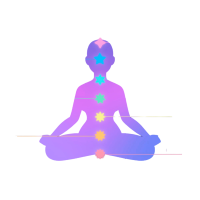
Introduction to Kundalini Yoga
Kundalini Yoga is a profound and transformative practice that blends various techniques including dynamic postures (asanas), breathing exercises (pranayama), meditation, and chanting (mantra). Originating from ancient Tantric traditions, Kundalini Yoga aims to awaken the dormant spiritual energy (kundalini) believed to reside at the base of the spine. This awakening is said to lead to higher states of consciousness and spiritual enlightenment.
Table of Contents
Benefits of Practicing Kundalini Yoga

Physical Benefits:
- Flexibility: Enhances overall flexibility and range of motion.
- Strength: Builds core strength and muscular endurance.
- Vitality: Increases physical energy and stamina.

Mental Benefits:
- Stress Reduction: Calms the mind and reduces anxiety levels.
- Clarity: Improves focus, concentration, and mental clarity.
- Emotional Balance: Promotes emotional stability and resilience.
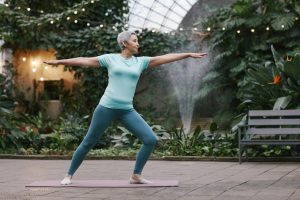
Spiritual Benefits
Awakening: Facilitates the awakening of spiritual energy and consciousness.
Connection: Deepens the connection with oneself and the universe.
Inner Peace: Cultivates inner peace and a sense of fulfillment.
Techniques and Practices Involved
Setting Intentions
Before starting your practice, take a moment to set an intention. This could be a personal goal, a feeling you wish to cultivate, or simply a dedication of your practice to someone or something meaningful to you.
Tuning In
- Begin your Kundalini Yoga session by “tuning in” with the Adi Mantra: Sit in a comfortable cross-legged position (Sukhasana) on your yoga mat.
- Bring your palms together in front of your heart center (Anjali Mudra).
- Your Eyes should be closed and you need to take a few deep Breaths.
- Chant aloud or silently to yourself: “Ong Namo Guru Dev Namo” (I bow to the divine wisdom within myself). Repeat this mantra three times.
Warm-Up Exercises (Optional)
Some Kundalini Yoga sessions begin with warm-up exercises to prepare the body for more intense kriyas (sequences). These may include gentle stretching, neck rolls, or spinal twists.
Pranayama (Breathing Exercises)
Pranayama techniques are integral to Kundalini Yoga, helping to control and direct the flow of prana (life force energy).
Common Pranayama Techniques
1. Breath of Fire (Agni Pran):
Sit comfortably with a straight spine.
- Begin rapid, rhythmic breaths through the nose, equal inhales and exhales, focusing on the navel area.
- This breath is invigorating and helps to build internal heat and release toxins.
2. Alternate Nostril Breathing (Nadi Shodhana):
- Sit comfortably with the spine erect.
- Close the right nose with the help of the thumb and inhale deeply through the left nose.
- Close the left nose with the ring finger and exhale through the right nose.
- Repeat, alternating nostrils for several rounds. This breath balances the left and right energy channels (ida and pingala).

Kriyas (Yoga Sets)
Kriyas are specific sequences of exercises practiced in Kundalini Yoga to achieve a particular outcome. Each kriya is designed to work on different aspects of the body, mind, and spirit. Examples of kriyas include:
1. Spinal Flex
Sit in Easy Pose (cross-legged) with hands on the knees. Inhale as you arch the spine forward and exhale as you round the spine backward. Repeat in a fluid motion.

2. Stretch Pose
Lie on your back, raise your legs 6 inches off the ground, and raise your head and shoulders. Hold this pose and breathe deeply. This strengthens the core and improves circulation.
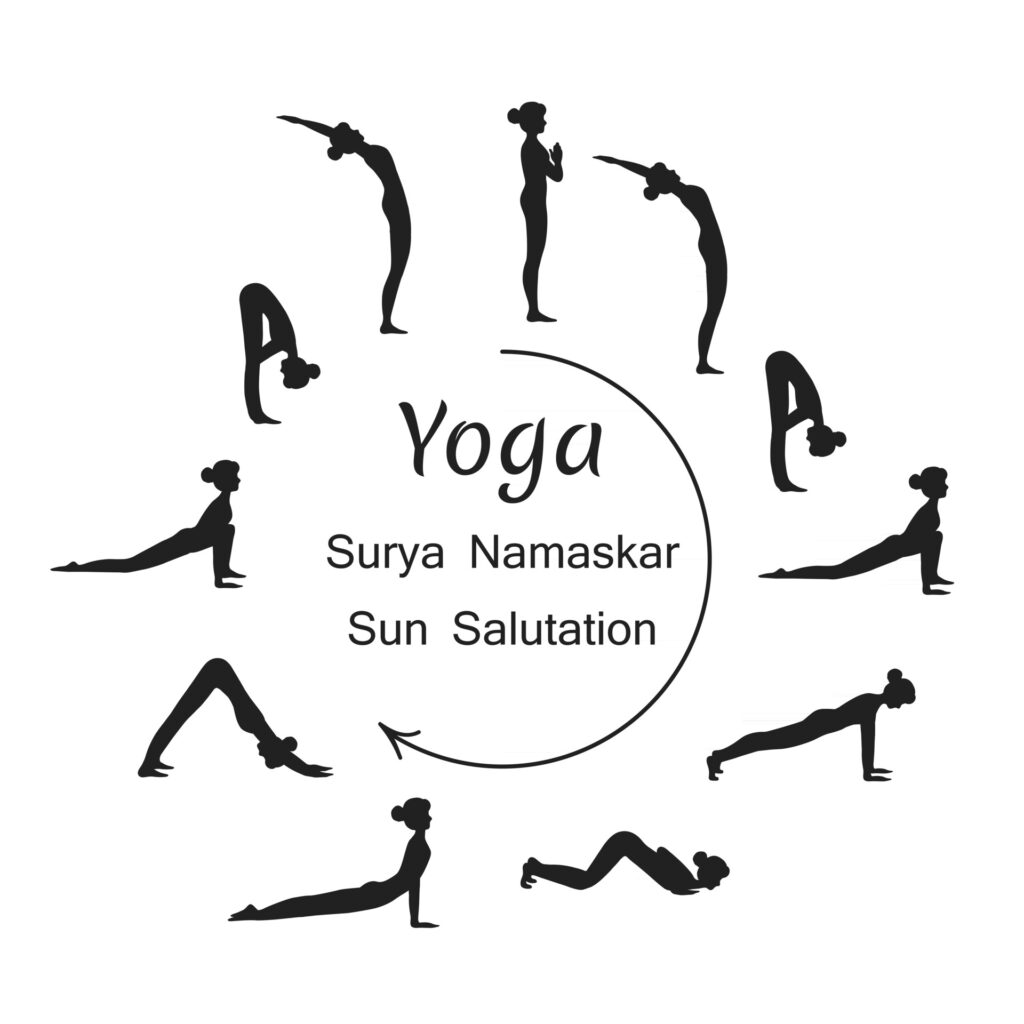
3. Surya Namaskar (Sun Salutation)
A dynamic sequence that combines various postures, breathwork, and mantras to energize the body and awaken awareness.
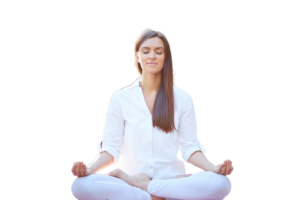
Meditation
After completing a kriya or series of exercises, Kundalini Yoga often incorporates meditation to integrate the energy generated and achieve a state of inner stillness and awareness.
Common meditation practices include
1. Silent Meditation:
Sit comfortably, close your eyes, and focus on your breath or a specific point of concentration.
2. Mantra Meditation:
Repeat a sacred sound or phrase (mantra) silently or aloud to quiet the mind and elevate consciousness.
Asanas practiced in Kundalini Yoga along with instructions on how to perform them:
1. Easy Pose (Sukhasana)
Instructions:
Sit on your yoga mat with your legs crossed and your spine straight.
Rest your hands on your knees with palms facing upward (Gyan Mudra) or place your hands in any comfortable position.
Close your eyes and focus on your breath. Hold this pose comfortably for several minutes, maintaining a relaxed but alert state.
Benefits:
It improves hip flexibility and stretches the knees and ankles.
Promotes a calm and meditative state of mind.

2. Cobra Pose (Bhujangasana)
Instructions:
Lie on your stomach with your palms flat on the ground under your shoulders.
As you inhale, raise your chest off the ground while keeping your elbows slightly bent.
Keep your pubic bone pressed into the mat and gaze forward or slightly upward.
Maintain the pose for several breaths, then exhale and lower yourself back down to the mat.
Benefits:
Strengthens the spine, shoulders, and buttocks.
Opens the chest and improves flexibility in the spine.
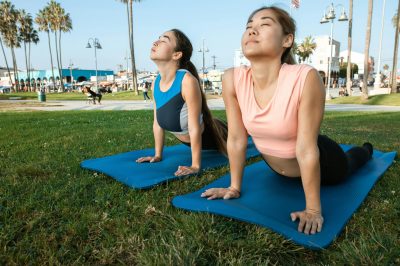
C. Cat-Cow Stretch (Marjaryasana-Bitilasana)
Instructions:
- Start by positioning yourself on your hands and knees, creating a tabletop shape with your body.
- Inhale as you arch your back, dropping your belly towards the mat and lifting your head and tailbone (Cow Pose).
- Breathe out as you arch your spine towards the ceiling, drawing your chin towards your chest (Cat Pose). Continue flowing between these two poses with your breath, syncing movement and breath together.
Benefits:
Increases flexibility and mobility in the spine.
It stimulates the abdominal organs and enhances digestion.

D. Stretch Pose (Pavanmuktasana)
Instruction
- Lie down on your back with your legs stretched out and arms by your sides. Inhale and raise your legs 6 inches off the ground, keeping them straight and together.
- Extend your arms alongside your body with palms facing down, hovering a few inches above the ground.
- Hold the pose and continue to breathe deeply and rhythmically.
Benefits:
Strengthens the abdominal muscles and core.
Enhances blood circulation and boosts energy flow throughout the body.
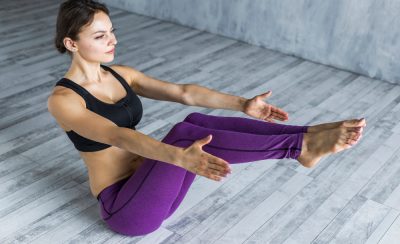
E. Butterfly Pose (Baddha Konasana)
Instructions:
- Sit on your mat with your legs extended straight out in front of you.
- Bend your knees and bring the soles of your feet together, allowing your knees to drop towards the mat.
- Hold your feet with your hands, gently pressing your knees towards the ground.
- Sit up tall and lengthen your spine, breathing deeply and evenly.
Benefits:
Opens the hips and groin.
Stimulates the abdominal organs and improves flexibility in the hips and lower back.
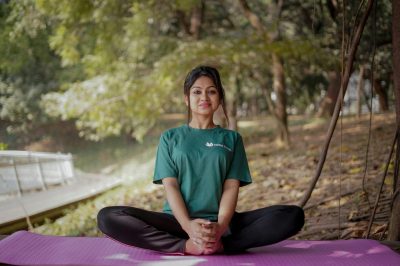
F. Shoulder Stand (Sarvangasana)
Instructions:
- Lie on your back with your arms Balanced by your sides, palms downward.
- Use your hands to support your lower back as you inhale and lift your legs towards the ceiling.
- Keep your elbows close to your body and your legs straight, pointing your toes towards the ceiling.
- Hold the pose for several breaths, then exhale and slowly lower your legs back down to the mat.
Benefits:
Increases circulation to the upper body and brain.
Strengthens the shoulders, arms, and core muscles.
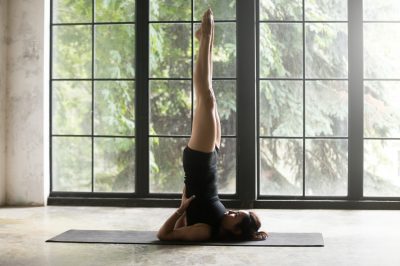
G. Corpse Pose (Savasana)
Instructions:
- Lie on your back with your legs extended and arms resting at your sides, palms facing up.
- Close your eyes and let your body sink fully into the mat.
- Concentrate on your breath, releasing any tension or stress with each exhale. Remain in this pose for at least 5-10 minutes, allowing the benefits of your practice to integrate.
Benefits:
Promotes deep relaxation and rejuvenation.
Reduces stress and anxiety levels.

Tips for Practicing Asanas in Kundalini Yoga:
- Breath Awareness: Coordinate your breath with each movement to enhance the flow of prana and deepen your practice.
- Comfortable Alignment: Focus on finding a comfortable alignment in each pose rather than striving for perfection in form.
- Listen to Your Body: Respect your body’s limitations and modify poses as needed to suit your individual needs and abilities.
- Relaxation and Closing After meditation: take a few moments to relax in Savasana (Corpse Pose) or a comfortable seated position. Let your body and mind fully experience the benefits of your practice. Close your practice with the “Long Time Sun” song and Sat Nam (Truth is my identity). Closing Prayer You may choose to close your practice with a prayer, affirmation, or moment of gratitude. This is a personal choice and can be tailored to your spiritual or philosophical beliefs.
-
Closing Prayer: You may choose to close your practice with a prayer, affirmation, or moment of gratitude. This is a personal choice and can be tailored to your spiritual or philosophical beliefs.
Other Important Information about Kundalini Yoga:
Why is kundalini yoga different from other types of yogas ?
Kundalini Yoga sets itself apart by:
Dynamic Movements: Incorporates dynamic movements and vigorous exercises to awaken energy.
Focus on Breath and Sound: Emphasizes the use of breathwork (pranayama) and chanting (mantra) to influence the mind and spirit. Spiritual Awakening: Aims to awaken dormant energy (kundalini) and facilitate spiritual growth and enlightenment.
Recommendations for Accessories
To optimize your Kundalini Yoga practice, consider:
Yoga Mat: Provides comfort and stability during asanas and meditation.
Comfortable Clothing: Wear loose, breathable clothing for ease of movement and comfort.
Motivational Quotes
“In Kundalini Yoga, the most important thing is your experience. It goes right to your heart.”
The awakened Kundalini bestows prosperity, creativity, and peace
yogaposes8.com
FAQs about Kundalini Yoga
Common Questions:
What is Kundalini energy?
Kundalini energy is the dormant spiritual energy believed to be coiled at the base of the spine, which can be awakened through yoga practices.
Is Kundalini Yoga suitable for beginners?
Yes, beginners can start Kundalini Yoga under the guidance of a qualified instructor who can tailor practices to individual needs.
How often should I practice Kundalini Yoga?
Consistent practice, ideally a few times a week, can yield significant benefits. However, the frequency can vary based on personal goals and schedules.
Join us on instagram
for more tips, inspiration, and updates on all things yoga and fitness. Let’s grow and glow together!
